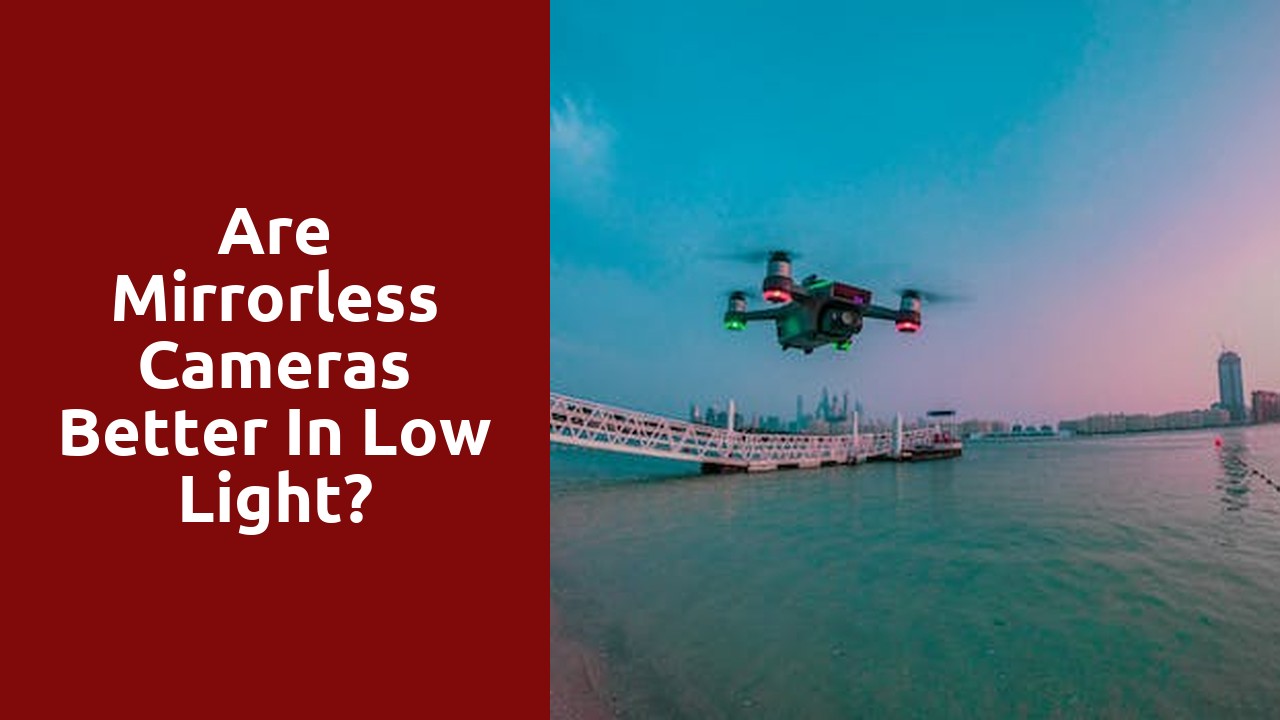Are mirrorless cameras better in low light?

Mirrorless cameras are often thought of as being better in low light situations than traditional cameras because they have a smaller sensor size. This means that they can capture more light and therefore produce better images. However, this is not always the case. It is important to consider the type of low light situation you are shooting in before making a decision about which camera is best for you.
Definition of mirrorless cameras
Mirrorless cameras are typically smaller and lighter than traditional cameras, making them better for shooting in low light. They also have sensors that are more sensitive to light, which can result in better photos and videos.
Overview of the advantages of mirrorless cameras
Mirrorless cameras are often seen as being better options for those looking for a camera that can take great photos in low light. This is because mirrorless cameras do not have a mirror that can get in the way, meaning that they can take photos with more clarity and detail. Additionally, mirrorless cameras often have sensors that are more sensitive to light, meaning that they can take photos that are even brighter and more colorful than those taken with traditional cameras.
Advantages of Mirrorless Cameras in Low Light
Mirrorless cameras are often praised for their ability to take great photos in low light. While there are some exceptions, most mirrorless cameras are better equipped to capture clear images in low light than traditional cameras. This is because mirrorless cameras use electronic sensors to capture images, which means they don't require a mirror to take pictures. Additionally, mirrorless cameras often have larger sensors that are better able to capture details in dark environments.
Improved Autofocus
Mirrorless cameras have improved autofocus capabilities, making them better suited for low light photography. Additionally, they often have sensors that are larger than those found in traditional cameras, which allows for better image quality.
Reduced Noise
Mirrorless cameras are often thought of as being better in low light situations because they lack the mirror that is found on traditional cameras. This means that the camera can use a sensor that is more sensitive to light, which can result in a better image. However, there are some mirrorless cameras that do have a mirror, so it is important to research which model is best for your needs.
Increased Dynamic Range
Mirrorless cameras have increased dynamic range, meaning they can capture more light and detail than traditional cameras. This is especially beneficial in low light situations, where a traditional camera may struggle to capture details.
Disadvantages of Mirrorless Cameras in Low Light
Mirrorless cameras are often seen as being better in low light situations than traditional cameras because they lack a mirror. This means that the camera can use an electronic viewfinder to take pictures instead of using a mirror to reflect the image of the subject onto the camera's sensor. This can result in a more accurate picture because the camera can see what the subject is actually looking at. However, mirrorless cameras are not always the best option for taking pictures in low light because they can be more difficult to use.
Limited Battery Life
Mirrorless cameras are often thought of as being better in low light situations, due to their lack of a mirror. This means that the camera can use a sensor that is more sensitive to light, which can result in better photos. However, this doesn't mean that a regular camera can't take great photos in low light; it just takes a bit more effort.
High Cost
Mirrorless cameras are often thought of as being better in low light situations, as they have a smaller sensor size which results in less noise and a better image quality. However, this is not always the case - depending on the camera and lens used. Some mirrorless cameras, such as the Panasonic Lumix DMC-GH4, have a sensor size of 16 megapixels, which is larger than some DSLR cameras. This means that they are better equipped to capture detailed images in low light, as well as providing better overall image quality.
Mirrorless cameras are often thought of as being better in low light situations, as they have a smaller sensor size which means less noise and better image quality. However, this is not always the case - some mirrorless cameras, such as the Panasonic Lumix DMC-GH4, are just as good or even better in low light than some of the more traditional, full-frame cameras. It really comes down to what you are looking for in a camera - are you primarily concerned with image quality or portability?
Summary of the advantages and disadvantages of mirrorless cameras in low light
Mirrorless cameras are often seen as being better in low light situations than traditional cameras because they lack a mirror. This means that the camera can use a digital sensor to capture images, which results in less noise and a cleaner image. However, there are some disadvantages to mirrorless cameras in low light. For one, they often have smaller sensors than traditional cameras, which means that they may not be able to capture as much light as a traditional camera. Additionally, they may not have as many features available for low light photography, which may make it difficult to take good photos.
Recommendation for photographers considering a mirrorless camera
If you're considering a mirrorless camera, it's worth considering the pros and cons of each type. Mirrorless cameras are generally better in low light, but they can also be more expensive. It's important to decide what you need and want in a camera before making a purchase.
Related Links
What is ultra low light camera?What is the best low exposure camera?